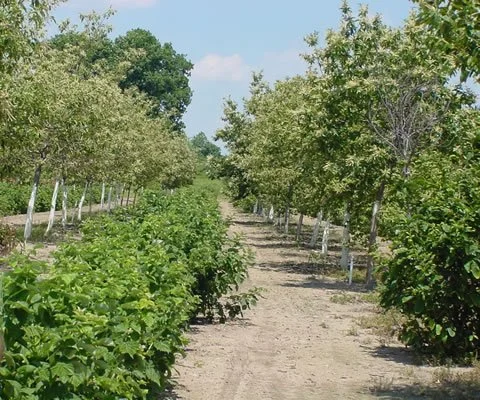Agroforestry on the Two Ends of the Water Cycle
Agroforestry is made up of nature based techniques to better utilize agricultural lands across the globe. With increasing temperatures, the water cycle is under more stress now than ever before. Where both droughts and flooding events are becoming more frequent and more extreme. Agroforestry may be the answer to both sides of this discussion, from waterlogged swampy soils to arid desert conditions that deal with soil evaporation. Both of these conditions can be found here in Washington state and leave farmers to get creative with adapting these new techniques under the rapidly changing conditions.
Curbing Soil Evaporation
Farmers in arid conditions are facing issues with water retention, especially in ecosystems that are dependent on constant rain cover. Studies have been conducted all over the world to try and find a quick way to change these conditions and increase productivity. A study looking at coffee agroforestry ecosystems found that the shade trees planted during Alley cropping, were able to decrease the amount of soil evaporation by up to 40% (Lin, 2010). When 60-80% of shade cover was achieved, it was enough for evaporation to decrease to a sustainable level to help farmers dealing with water deficiencies. These same techniques have begun to be utilized in arid Eastern Washington, trying to utilize native trees prone to their environment.
Alley cropping is the process of planting rows of crops between rows of trees or shrubs to blend agriculture and forestry benefits seamlessly.
“Wet-Feet Farming”
On the opposite side of the spectrum, waterlogged soils can be detrimental to sensitive crops and fields that can be susceptible to seasonal flooding. A collection of farmers in Western Washington have joined together to help support their efforts on dealing with these conditions and Conservation districts are helping to establish trials with farmers around northwest Washington. Utilizing techniques from Alley cropping to working buffers, with a focus of planting species that are perennial, wet-tolerant, and that can help to stabilize the soil. Conservation Districts, WSU Extension and Agroforestry Northwest are all teaming up to help farmers across Western Washington gain the necessary skills and knowledge to implement what they labelled as “Wet-Feet Farming” techniques on their lands. They can assist the farmers through the entire planning to planting process:
First the planning process helps to assess the needs of the land and what techniques would be the most effective. By looking at soil assessments, cost assessments and what are the management goals of the land, they can help to create a plan. To decide if a dense food forest type planting would be more beneficial vs the sparse planting style of a wide alley cropping of perennial
Next they pick out what perennials would be best on the farm, Better Ground focuses on Aronia, Pacific Crabapples and Willow trees as a starting point as these are higher value perennials that thrive in saturated soils.
Next, this resource can help the farmer with resources on how to plant the new crops and gives them resources to decide what is the best approach for their farm. To till or not to till? Or how much space is necessary between each tree? They can provide answers to all these questions.
Finally, They provide resources for the long-term maintenance of these crops, from mulching to how to protect the plants in their juvenile years, they can provide information to help early success.
Agroforestry techniques are a way towards a sustainable agricultural future, and having a free exchange of knowledge to help farmers transition to these techniques will only inspire others. Once one pillar of a farming community has undergone this change in technique, it only makes it easier for other farmers to follow behind. Click the link below to learn more about how you can get involved with your local Conservation District and other Agroforestry organizations around the Pacific Northwest.

